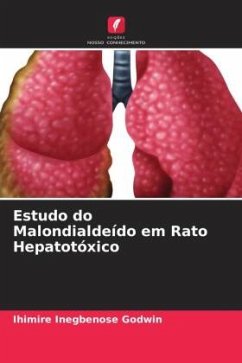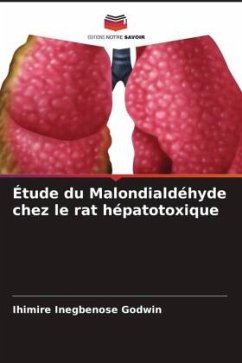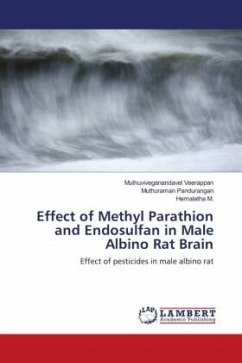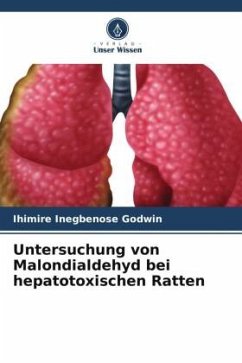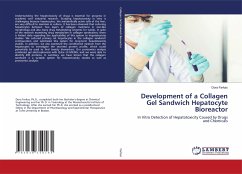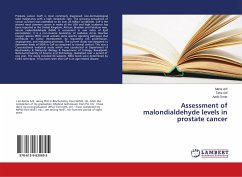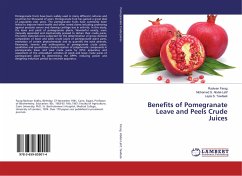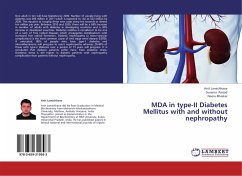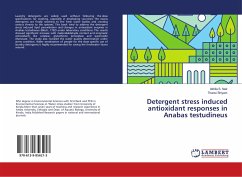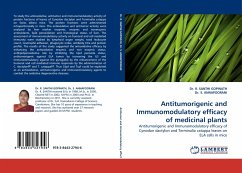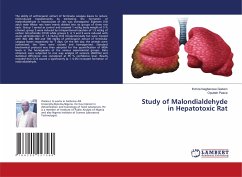
Study of Malondialdehyde in Hepatotoxic Rat
Versandkostenfrei!
Versandfertig in 6-10 Tagen
27,99 €
inkl. MwSt.

PAYBACK Punkte
14 °P sammeln!
The ability of anthocyanin extract of Terminalia catappa leaves to reduce CCl4-induced hepatotoxicity by estimating the formation of malondialdehyde in hepatocytes of rats was investigated. Eighteen (18) adult male Wistar rats were evenly divided into six groups of three rats each. Group 1 served as control and received 1 mL/kg body weight of 5 % ethanol, group 2 were induced by intraperitoneal injection of 1.5 mL/kg of carbon tetrachloride (CCl4) while groups 3, 4, 5 and 6 were induced with acute administration of 1.5 mL/kg CCl4 intraperitoneally but were treated with 300, 400, 600 and 700 mg...
The ability of anthocyanin extract of Terminalia catappa leaves to reduce CCl4-induced hepatotoxicity by estimating the formation of malondialdehyde in hepatocytes of rats was investigated. Eighteen (18) adult male Wistar rats were evenly divided into six groups of three rats each. Group 1 served as control and received 1 mL/kg body weight of 5 % ethanol, group 2 were induced by intraperitoneal injection of 1.5 mL/kg of carbon tetrachloride (CCl4) while groups 3, 4, 5 and 6 were induced with acute administration of 1.5 mL/kg CCl4 intraperitoneally but were treated with 300, 400, 600 and 700 mg/kg of anthocyanin extract of Terminalia catappa leaves respectively for 7 days. On the 8th day, the animals were euthanized, the livers were excised and homogenised. Standard biochemical protocol was then adopted for the quantification of MDA levels in the homogenate of the various experimental groups. Data obtained were subjected to one way analysis of variance (ANOVA) and statistical difference was considered at 95 % confidence level. Results revealed that CCl4 caused a significantly (p 0.05) increased formation of malondialdehyde.



